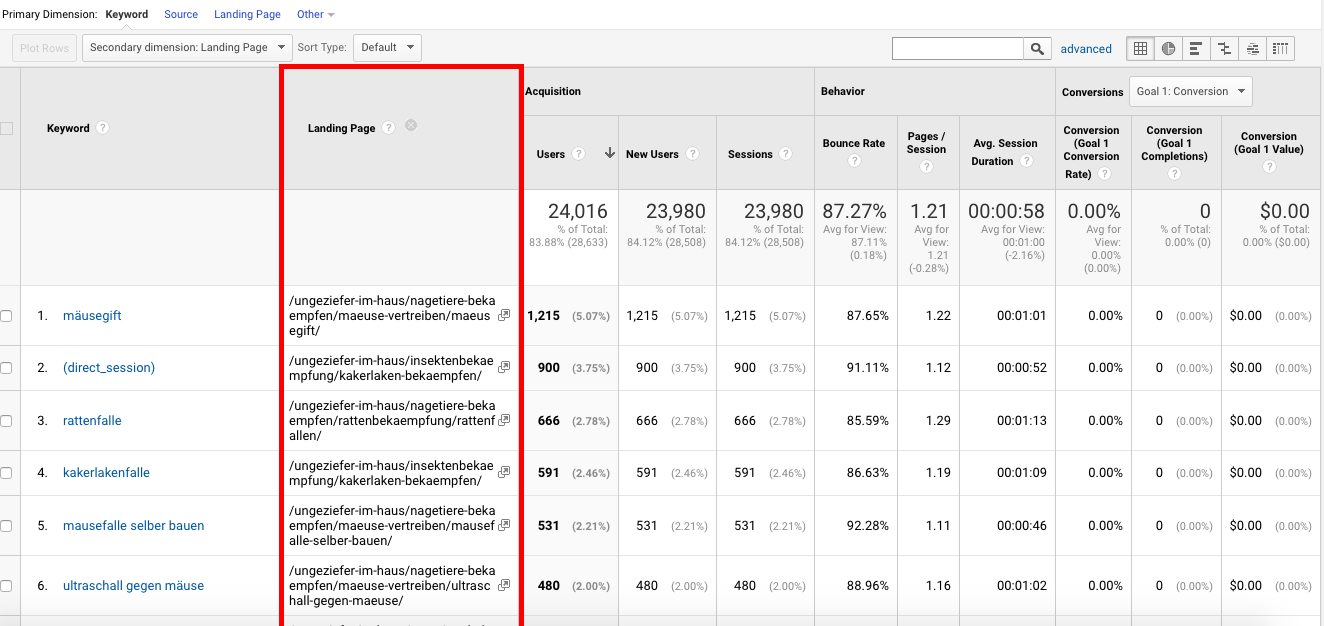Insights into the 'Secondary Dimension' in Google Analytics: A Detailed Description
Insights into the 'Secondary Dimension' in Google Analytics: A Detailed Description
Blog Article
Deciphering the Relevance of Additional Dimension in Google Analytics: Everything About Its Value and Effect
In the realm of digital analytics, the usage of secondary measurements within Google Analytics works as a pivotal tool for discerning deeper layers of information insights. The importance of second dimensions exists in their capability to offer a nuanced view of user habits and interaction with a site or system. By exploring information beyond surface-level metrics, companies can open a wide range of info that forms calculated decisions and refines marketing initiatives. This exploration right into the realm of additional measurements not just offers an extensive understanding of individual involvement but likewise clarifies the detailed characteristics that drive on the internet efficiency.
Understanding Second Dimensions in Google Analytics
The understanding of second measurements in Google Analytics is necessary for acquiring deeper insights right into user behavior and site performance. While main measurements supply basic information points such as web traffic resources and page sights, additional dimensions enable for a more nuanced analysis by providing added context to these primary metrics. By integrating additional measurements, users can sector and filter their data to discover patterns and fads that may not be promptly apparent.
Introducing the Benefits of Secondary Dimensions
Structure upon the fundamental understanding of second measurements in Google Analytics, discovering the advantages they provide exposes indispensable understandings for improving information evaluation and decision-making. By incorporating secondary dimensions, users can dig much deeper into their data, obtaining a more thorough sight of customer behavior, content performance, and various other vital metrics. One of the primary benefits is the capacity to sector information, permitting a much more granular analysis of various measurements such as traffic resources, tools, demographics, and much more. When looking at information in aggregate., this division enables individuals to recognize patterns, patterns, and correlations that may not be evident (what is a “secondary dimension” in google analytics?).
In addition, secondary measurements offer context to key data, using added layers of information that can aid in recognizing user communications and choices. This improved understanding can guide strategic decision-making, causing more targeted advertising projects, web site optimizations, and overall enhanced efficiency. In essence, second measurements work as an effective tool for unlocking much deeper understandings and making best use of the utility of Google Analytics for services and website proprietors.
Leveraging Second Measurements for Enhanced Insights
By harnessing the power of second measurements in Google Analytics, organizations can uncover deeper understandings that drive notified calculated and decision-making optimization initiatives. Leveraging second dimensions permits organizations to delve beyond surface-level data and acquire an extra thorough understanding of user behavior, target market demographics, web traffic sources, and website performance. As an example, by combining key measurements like website traffic resources with additional dimensions such as geographical area or device group, businesses can determine which devices or areas are driving one of the most important website traffic to their website.
In addition, secondary measurements allow organizations to section and assess information much more properly, aiding them determine trends, patterns, and chances that might have or else gone unnoticed. By utilizing additional measurements, services can customize their advertising strategies, material, and customer experience to better satisfy the demands and preferences of their target market. Essentially, leveraging secondary dimensions in Google Analytics encourages companies to make data-driven decisions that cause improved efficiency, raised ROI, and lasting development.

Effect of Second Measurements on Information Evaluation
Enhancing data evaluation with the use of second measurements in Google Analytics gives businesses with a much deeper understanding of their online efficiency metrics. By incorporating second dimensions, such as time of day, geographic place, or tool group, businesses can uncover important understandings that might have been neglected with key dimensions alone. This enhanced level of granularity enables even more exact segmentation of data, allowing companies to recognize patterns, fads, and relationships that can drive calculated decision-making.

Taking Full Advantage Of Potential: Secondary Dimensions Approaches
One essential approach is to combine second dimensions with key dimensions to acquire an extensive sight of user communications. Pairing the main measurement of 'source/medium' with second measurements like 'landing page' or 'device group' can reveal which channels are driving website traffic to certain pages or just how individual habits varies across devices.
Moreover, making use of additional dimensions to section data based upon individual demographics, behavior, or modern technology can aid businesses customize their advertising and marketing initiatives to certain target market segments. This targeted approach can bring about enhanced conversion rates, boosted user experiences, and ultimately, increased ROI. By making best use of the possibility of additional measurements in Google Analytics, businesses can make informed decisions, enhance their online existence, and drive lasting development.
Final Thought
In verdict, second dimensions in Google Analytics play a critical function in offering much deeper understandings and enhancing data analysis. By making use of secondary measurements successfully, organizations can obtain a more detailed understanding of user habits and internet site efficiency. Incorporating second measurements into data analysis techniques can lead to even more educated decision-making and enhanced total performance. It is vital for services to take advantage of the power of second measurements to optimize their potential and accomplish higher success in their on the internet endeavors (what is a “secondary dimension” in google analytics?).
While key dimensions provide essential information factors such as website traffic resources and page views, additional dimensions enable for an extra nuanced analysis by supplying extra context to these key metrics. By incorporating key measurements like website traffic sources with additional dimensions such as geographic place or device category, services can determine which areas or tools are driving the most important traffic to their web site.
By integrating additional dimensions, such as time of day, geographic location, or device group, services can uncover useful understandings that might have been see here neglected with main measurements alone. description One vital approach is to incorporate second dimensions with primary measurements to gain a comprehensive sight of user interactions. Combining the primary dimension of 'source/medium' with additional measurements like 'landing page' or 'gadget group' can expose which networks are driving website traffic to certain pages or exactly how customer behavior differs throughout tools.
Report this page